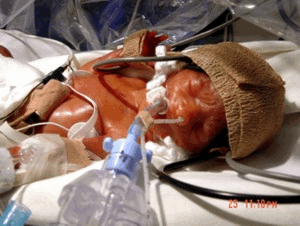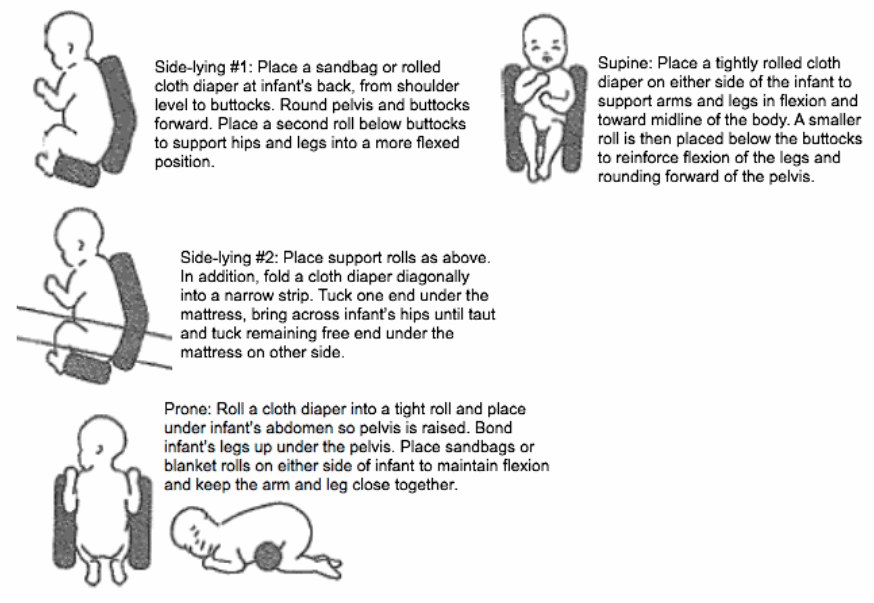PT 861 - The High Risk Infant
Principle #2: Encourage symmetry and midline control
- The early post-natal motor development of the pre-term infant is 'built' on a completely different foundation than that of the full-term infant:
- less 'crunch' time in uterine environment results in decrease or absence of physiological flexion to offset the normal progression of extensor muscle tone.
- global hypotonia related to the degree of prematurity results in posturing of the extremities in extension and abduction, and decreased orientation to midline and active control over midline postures and movement
- the force of gravity against weak muscle groups further reinforces the extended posture of premature infants.
- Ventilation care, provided to the infant in supine position, produces hyperextension of the neck, scapular elevation, retraction of the shoulders and upper extremities, arching of the trunk and immobility of the pelvis.

- Proper positioning is essential to promoting the development of symmetrical, flexed body postures. This is called 'nesting'.
- Symmetry and flexion should be encouraged in all positions: supine, prone and sidelying.
